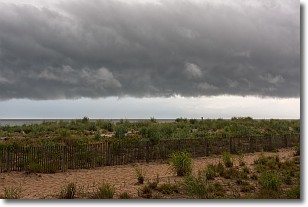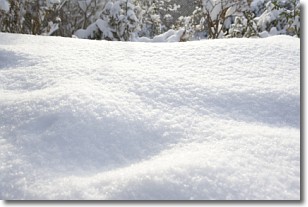Weather Alert in South Carolina
Tropical Cyclone Statement issued July 5 at 8:00AM EDT by NWS Charleston SC
AREAS AFFECTED: Hampton; Inland Colleton; Dorchester; Inland Berkeley; Inland Jasper; Beaufort; Coastal Colleton; Charleston; Coastal Jasper; Tidal Berkeley
DESCRIPTION: HLSCHS This product covers southeast South Carolina and southeast Georgia **CHANTAL TO APPROACH THE SOUTH CAROLINA COAST SUNDAY MORNING** NEW INFORMATION --------------- * CHANGES TO WATCHES AND WARNINGS: - None * CURRENT WATCHES AND WARNINGS: - A Tropical Storm Watch is in effect for Charleston * STORM INFORMATION: - About 140 miles south-southeast of Charleston SC - 30.9N 79.0W - Storm Intensity 40 mph - Movement North or 005 degrees at 2 mph SITUATION OVERVIEW ------------------ Tropical Storm Chantal will meander towards the South Carolina coast today and tonight before making landfall along the middle and upper South Carolina coast Sunday morning. As Chantal nears the coast, breezy northwest winds will occur as the system interacts with high pressure to the north. Wind gusts are forecast to remain the strongest along the South Carolina beaches, with gusts around 40 mph possible. In addition, wind gusts across the elevated bridges around the Charleston Metro area may exceed 45 mph at times today. Rain bands will push onshore along the coast of the South Carolina Lowcountry this morning and continue into tonight. These bands may drift slowly inland as the system nears the coast bringing as much as 1 to 2 inches of rain. The rain may become locally heavy at times, resulting in flooding, mainly in low-lying and poor drainage areas. Heavy rainfall could occur during the late afternoon high tide, potentially increasing the risk of flooding across coastal communities and locations near tidal waterways late this afternoon into early this evening. This includes Downtown Charleston. Widespread flash flooding is unlikely at this time. Gusty winds and building waves will result in strong rip currents along the South Carolina and Georgia coast through this weekend. In addition, beach erosion and high surf with breakers of 4 to 6 feet could occur along the beaches of Charleston County. POTENTIAL IMPACTS ----------------- * WIND: Prepare for hazardous wind having possible limited impacts across Charleston County. Potential impacts in this area include: - Damage to porches, awnings, carports, sheds, and unanchored mobile homes. Unsecured lightweight objects blown about. - Large tree limbs broken off. A few trees snapped or uprooted, but with greater numbers in places where trees are shallow rooted. - Some roads impassable due to debris, particularly within urban or heavily wooded locations. Hazardous driving conditions on bridges and other elevated roadways, especially for high profile vehicles. - Isolated to scattered power and communications outages. Elsewhere across southeast South Carolina and southeast Georgia, little to no impact is anticipated. * FLOODING RAIN: Prepare for locally hazardous rainfall flooding having possible limited impacts across the South Carolina Lowcountry. Potential impacts include: - Localized rainfall flooding could prompt a few rescues. - Rivers and tributaries could quickly rise with swifter currents. Small streams, creeks, canals, and ditches could become swollen and overflow in spots. - Flood waters can enter a few structures, especially in normally vulnerable spots. Rapid ponding of water could occur at underpasses, low-lying spots, and poor drainage areas. Several storm drains and retention ponds become near-full and begin to overflow. Some brief road and bridge closures. Elsewhere across southeast South Carolina and southeast Georgia, little to no impact is anticipated. * OTHER COASTAL HAZARDS: Gusty winds and increasing wave activity will result in strong rip currents and high surf along the South Carolina and Georgia coasts through this weekend. PRECAUTIONARY/PREPAREDNESS ACTIONS ---------------------------------- * EVACUATIONS: Follow the advice of local officials. * OTHER PREPAREDNESS INFORMATION: Always heed the advice of local officials and comply with orders that are issued. Do not needlessly jeopardize your life or the lives of others. Closely monitor weather.gov, NOAA Weather Radio and local news outlets for official storm information. Listen for possible changes to the forecast. * ADDITIONAL SOURCES OF INFORMATION: - For information on appropriate preparations see ready.gov - For information on creating an emergency plan see getagameplan.org - For additional disaster preparedness information see redcross.org NEXT UPDATE ----------- The next local statement will be issued by the National Weather Service in Charleston SC around 12 PM EDT, or sooner if conditions warrant.
INSTRUCTION: N/A
Want more detail? Get the Complete 7 Day and Night Detailed Forecast!
Current U.S. National Radar--Current
The Current National Weather Radar is shown below with a UTC Time (subtract 5 hours from UTC to get Eastern Time).

National Weather Forecast--Current
The Current National Weather Forecast and National Weather Map are shown below.

National Weather Forecast for Tomorrow
Tomorrow National Weather Forecast and Tomorrow National Weather Map are show below.

North America Water Vapor (Moisture)
This map shows recent moisture content over North America. Bright and colored areas show high moisture (ie, clouds); brown indicates very little moisture present; black indicates no moisture.

Weather Topic: What are Shelf Clouds?
Home - Education - Cloud Types - Shelf Clouds
 Next Topic: Sleet
Next Topic: Sleet
A shelf cloud is similar to a wall cloud, but forms at the front
of a storm cloud, instead of at the rear, where wall clouds form.
A shelf cloud is caused by a series of events set into motion by the advancing
storm; first, cool air settles along the ground where precipitation has just fallen.
As the cool air is brought in, the warmer air is displaced, and rises above it,
because it is less dense. When the warmer air reaches the bottom of the storm cloud,
it begins to cool again, and the resulting condensation is a visible shelf cloud.
Next Topic: Sleet
Weather Topic: What is Snow?
Home - Education - Precipitation - Snow
 Next Topic: Stratocumulus Clouds
Next Topic: Stratocumulus Clouds
Snow is precipitation taking the form of ice crystals. Each ice crystal, or snowflake,
has unique characteristics, but all of them grow in a hexagonal structure.
Snowfall can last for sustained periods of time and result in significant buildup
of snow on the ground.
On the earth's surface, snow starts out light and powdery, but as it begins to melt
it tends to become more granular, producing small bits of ice which have the consistency of
sand. After several cycles of melting and freezing, snow can become very dense
and ice-like, commonly known as snow pack.
Next Topic: Stratocumulus Clouds
Current conditions powered by WeatherAPI.com




